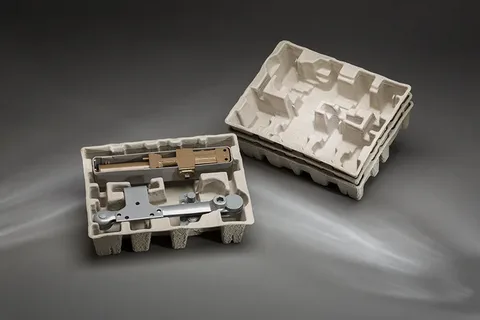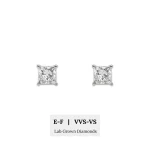The packaging industry is undergoing a significant transformation, driven by the growing demand for sustainability and innovation. As businesses and consumers alike seek eco-friendly alternatives to traditional packaging materials, Type 3 molded fiber has emerged as a game-changer. This advanced form of molded fiber packaging is not only environmentally friendly but also offers exceptional performance, making it a key player in shaping the future of packaging. In this article, we will explore the ways in which Type 3 molded fiber is revolutionizing the packaging industry, highlighting its benefits, applications, and future potential.
What is Type 3 Molded Fiber?
Type 3 molded fiber refers to a specific category of molded fiber products that are manufactured from renewable, recycled materials, typically paper or cardboard. This process involves using a slurry of fiber mixed with water, which is then molded into various shapes using specialized molds. The result is a lightweight, durable, and versatile packaging material that can replace traditional packaging options like plastic, foam, and even metal.
One of the defining characteristics of Type 3 molded fiber is its ability to be customized to fit a wide range of product shapes and sizes. This flexibility makes it ideal for industries that require packaging solutions for delicate or irregularly shaped items. The fibers used in Type 3 molded fiber are often sourced from recycled paper products, reducing the environmental impact compared to single-use plastics. As sustainability becomes increasingly important to both consumers and businesses, Type 3 molded fiber is proving to be a valuable tool in meeting these demands.
The Environmental Benefits of Type 3 Molded Fiber
One of the most significant advantages of Type 3 molded fiber is its positive environmental impact. In an era where environmental sustainability is at the forefront of business decisions, Type 3 molded fiber offers a renewable, biodegradable, and recyclable alternative to traditional packaging materials. Unlike plastic packaging, which can take hundreds of years to decompose, Type 3 molded fiber breaks down naturally within months, reducing waste and contributing to a circular economy.
Moreover, Type 3 molded fiber is produced using renewable resources, often sourced from recycled paper and cardboard. This reduces the need for virgin materials and helps conserve natural resources. By shifting toward Type 3 molded fiber, companies can reduce their carbon footprint and contribute to global efforts to combat climate change. In addition to its recyclability, the production process of molded fiber is energy-efficient, further enhancing its appeal as an eco-friendly packaging solution.
Versatility and Customization for Different Industries
Type 3 molded fiber is not a one-size-fits-all solution. It offers exceptional versatility and can be molded into a variety of shapes and sizes to meet the unique needs of different industries. From electronics and automotive components to food packaging and consumer goods, Type 3 molded fiber can be tailored to provide optimal protection, durability, and aesthetic appeal for a wide range of products.
For example, in the food industry, Type 3 molded fiber can be used for packaging fragile food items such as eggs, fruit, and baked goods. The material provides a cushioned barrier that protects delicate products during transportation and storage, reducing the risk of damage. In the electronics industry, Type 3 molded fiber can be used for packaging sensitive components, offering shock resistance and ensuring safe delivery to customers. With the ability to customize the design, texture, and strength of the packaging, Type 3 molded fiber is meeting the diverse needs of businesses across multiple sectors.
Cost-Effectiveness and Scalability
In addition to its environmental benefits and versatility, Type 3 molded fiber offers a cost-effective solution for businesses seeking to improve their packaging processes. The production of molded fiber is often more affordable compared to other sustainable packaging alternatives like biodegradable plastics or custom-designed paper products. As demand for sustainable packaging grows, the scalability of Type 3 molded fiber production becomes a crucial factor in making it a viable solution for businesses of all sizes.
The cost-effectiveness of Type 3 molded fiber is particularly appealing to companies looking to reduce packaging costs without compromising on quality or sustainability. With advancements in manufacturing technology, production efficiency has improved, allowing companies to scale their use of molded fiber packaging as demand grows. This scalability ensures that businesses can meet customer expectations for eco-friendly packaging while maintaining competitive pricing in the marketplace.
The Future of Type 3 Molded Fiber in Packaging
The future of Type 3 molded fiber in the packaging industry is bright, with ongoing research and development driving continuous improvements in the material’s performance and applications. As consumer preferences shift towards more sustainable products, the demand for eco-friendly packaging solutions like Type 3 molded fiber will only continue to rise. Moreover, advancements in manufacturing technology are expected to make the production process even more efficient, reducing costs and increasing the material’s availability.
In the coming years, we can expect to see even more widespread adoption of Type 3 molded fiber in various industries. As businesses look for ways to reduce their environmental impact and respond to regulatory pressures around plastic waste, Type 3 molded fiber will become an essential tool in the packaging industry’s efforts to transition to more sustainable practices. With its combination of environmental benefits, versatility, cost-effectiveness, and scalability, Type 3 molded fiber is poised to play a pivotal role in shaping the future of packaging for years to come.
Conclusion
Type 3 molded fiber is transforming the packaging industry by offering a sustainable, cost-effective, and versatile solution for a wide range of applications. Its eco-friendly properties, combined with its ability to be customized for different industries, make it an ideal alternative to traditional packaging materials. As the demand for sustainable packaging grows, Type 3 molded fiber will continue to play a key role in revolutionizing the industry, helping businesses reduce their environmental impact while meeting the needs of modern consumers. With its promising future, Type 3 molded fiber is set to become a staple in the packaging industry’s move toward a more sustainable and innovative future.













